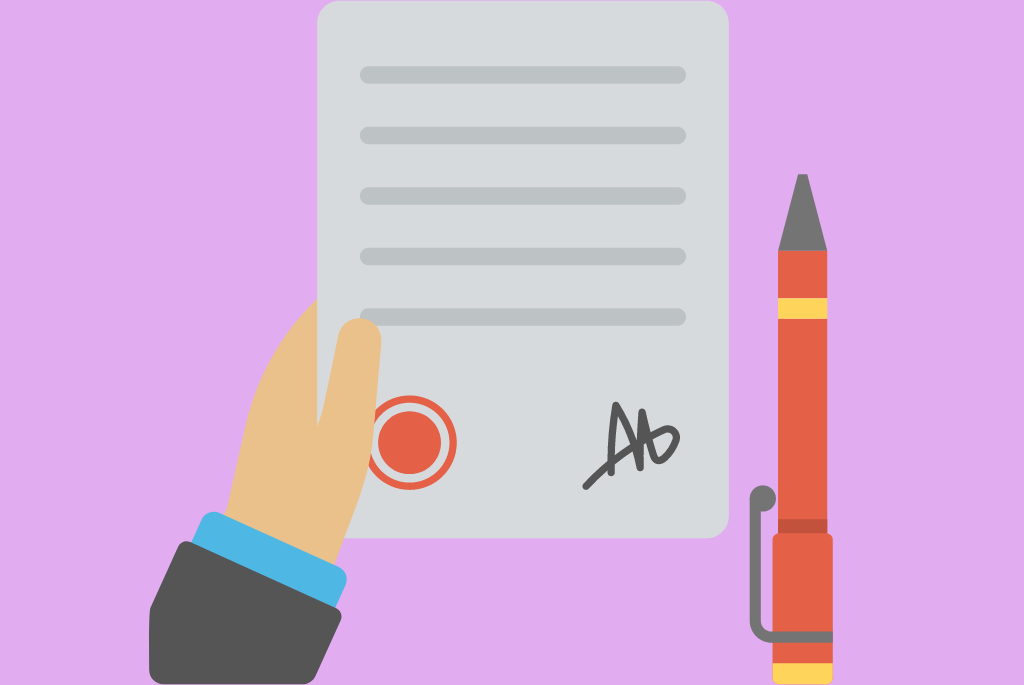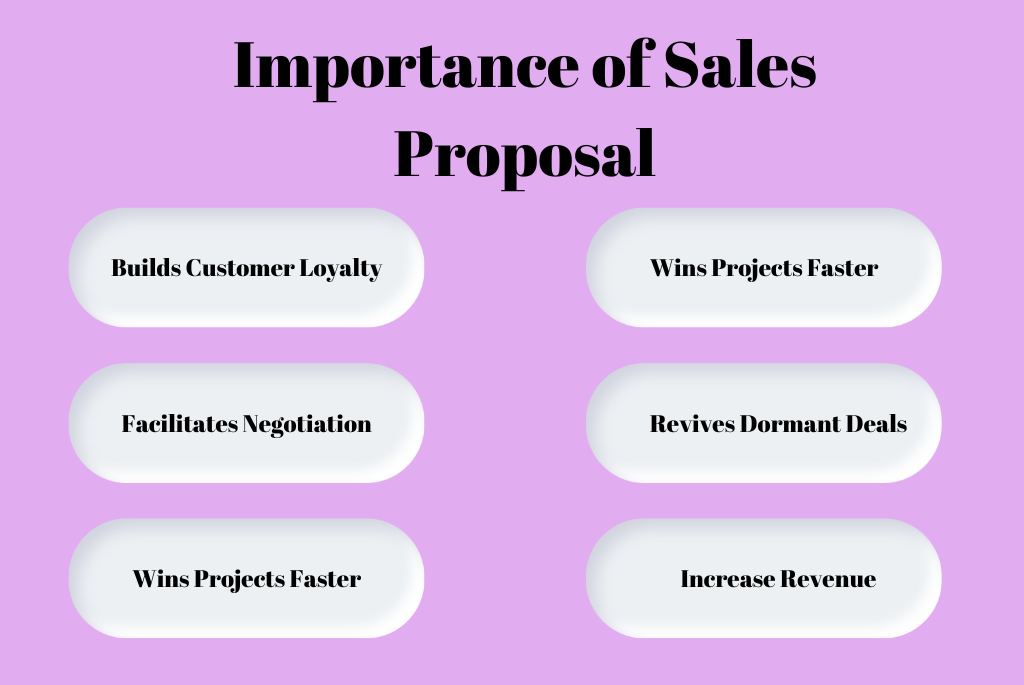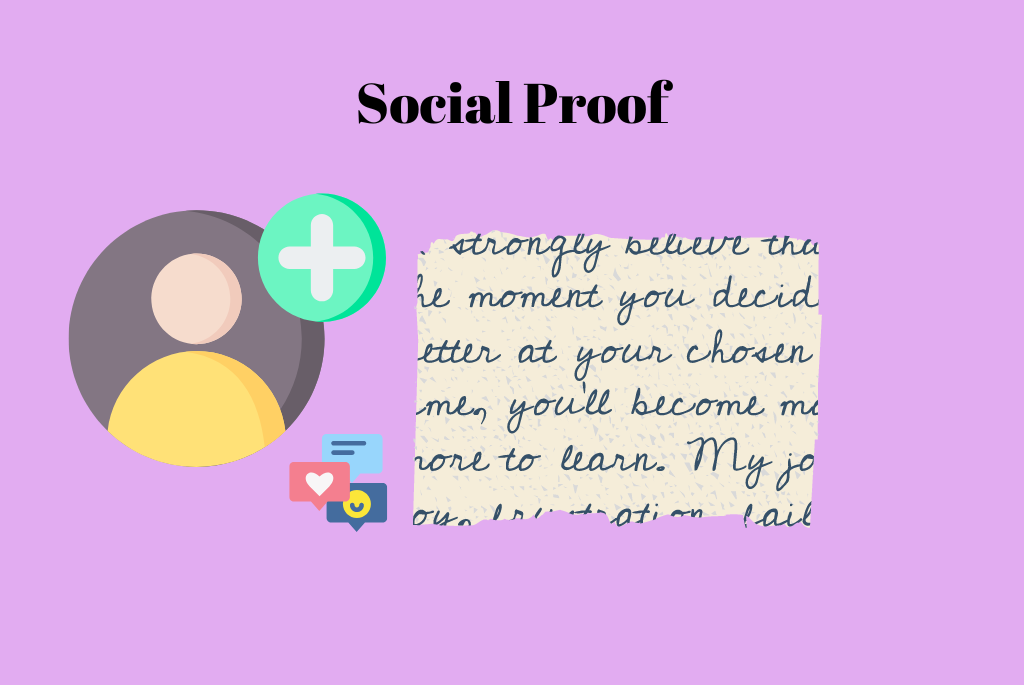A sales proposal is one of the most important components of a sales process. However, creating a great sales proposal doesn’t come easily. It takes time, research, strategic planning, and thoughtfulness.
The best sales proposals provide a customer-centered experience, relying on statistics and data to prove that a product or service works.
To create a highly effective sales proposal, you need to model the most successful ones and identify the best practices of top professionals in your industry. Fortunately, some tactics and steps can help you create more efficient business proposals.

This article outlines 11 winning strategies for creating a great proposal and winning more business consistently.
| Pro Tip: Are you in search of software that manages your sales, then check out the top-listed CRM software review and choose the best. |
What Is a Sales Proposal?
A sales proposal is a document that communicates your business’s value proposition to potential customers. For many small and medium-sized businesses, this document is their first opportunity to tell their brand story and share their objectives.
A sales proposal is also known as a sales deck or business proposal. An entrepreneur can use it to sell a business idea to investors; likewise, a sales team can use it to convince a potential client to purchase a product or service.
A sales proposal is a critical part of your marketing process. According to Rain Group research, only 20 percent of organizations win nearly three-quarters of sales opportunities.
Conversely, the remaining 80 percent only win 40 percent of their opportunities. The gap between these performances is broad. This implies that a perfect sales proposal is the ultimate tool any sales-starved business needs to bridge the gap and close deals with more customers.
The Importance of Having a Great Sale Proposal

- Builds Customer Loyalty
An effective sales proposal makes it easier for buyers to understand the worth of your product or service. By clearly explaining your business goals, you can position yourself as an expert in your field. It shows potential customers how you plan to grow and scale your business, giving them confidence in your vision for the future.
- Facilitates Negotiation
Sales proposals are a great tool for leveraging your position in a negotiation. They enable you to put your best foot forward and present a clear and compelling case on why you should be the recipient of the deal.
- Collaborate Easily
Creating a sales proposal puts you in a position where you have to solicit input from your sales team and internal stakeholders. Using a collaborative sales proposal software like PandaDoc allows you to collect contributions from your team and keep everyone on the same page.
- Wins Projects Faster
A sales proposal can help you win projects faster by presenting your business to prospective clients as an urgent need they must fill right away. With the right approach, you can trigger urgency in your proposal and drive quicker conversions.
- Revives Dormant Deals
Studying the performance of a sales proposal can help you identify the cause of decline and slowness in your business. With such information, you can optimize your offer to serve your clients better.
- Increase Revenue
The primary aim of a sales proposal is to convince a potential customer that buying your product or service will solve their problem and lead to the desired outcome. If your proposal successfully wins the prospect’s trust, it automatically translates into closing deals and profit for your business.
MORE: Sales tools like Cognism improve your sales results.
11 Winning Strategies for Creating a Great Sales Proposal
1. Understand Your Target Audience
Defining the client’s needs and expectations is an important part of any sales process. This step is necessary to ensure that you focus your effort on delivering what your potential clients truly need.
No matter how valuable your offer is, it won’t drive reasonable sales if you don’t target it at the right people. It’s only when you understand the needs of your target audience you’d be able to create a corresponding solution they’ll love.
To understand your buyers’ persona, create a short product or customer satisfaction survey asking your target audience to discuss their needs and expectations of your business.
Top CRM software like Pipeliner, Zoho, and Freshsales can help you customize your survey by building from scratch or pre-designed templates.
Another way to understand your target audience is to use customer engagement software to engage with customers and analyze their experience with your brand.
2. Use a Consistent Tone
A consistent tone is one of the most important elements of a great sales proposal. It helps to keep your customers engaged throughout the briefing. Ideally, your tone should be warm, persuasive, and professional. Being too casual or formal can put off your customers and make it harder for them to relate to your message.
Depending on the nature of your offer, you might want to include a story to give the proposal an emotional component. Emotions are a time-tested tool for closing deals, and stories help to unleash them.
Let your proposal tone express high confidence, but not an exaggeration. Using inflated numbers or words in a sales presentation can create a negative impression about your company and make the buyer feel like the product doesn’t hold as much value as you claim.
Another thing to look out for in your sales proposal is discriminatory language, be it sex, gender, ethnicity, or disability.
3. Keep It Brief and Simple
It’s critical to make your proposal clear and concise. Keeping your sales proposal short doesn’t mean that you should leave out important details. Rather, it means you should narrow your focus to the main value you’re offering and why your audience should trust you.
Avoid jargon and long sentences. Instead, use natural language that feels conversational and authentic.
No hard and fast rule dictates how long a sales proposal should be. Ideally, the length of your proposal depends on the nature of your product or service.
For example, a complex service like digital marketing requires a more detailed sales proposal than a cleaning service. To ensure that the materials are clear and concise, write no more than one page per point of sale. If you’re writing a complex deal, break it down into smaller pieces.
4. Identify the Deliverables
Before diving into your sales presentation, ensure you clearly understand the objective and deliverables involved in your proposal. You must clearly articulate what value you intend to deliver in exchange for their investment.
Creating awareness about your product’s or services’ value is necessary because when people don’t know what they are buying, they tend to be more conservative in their approach to risk and cost. Here are some vital questions to ask when defining deliverables.
- What’s the goal of the product/service?
- What is the client’s desired outcome?
- What components make up the project’s objective?
A project deliverable should also include your unique selling proposition (USP). This proposition is an offer that makes your product or service stand out from its competitors.
To determine your business’s USP, you must research your competition and compare your offer with theirs. Find out their flaws and brainstorm ideas to improve your offer.
5. Use High-low Pricing
High-low pricing is a pricing strategy where a business charges a high price for a new product or service and sells it at a lower price when the product becomes less desirable.
They often use promotions, markdowns, or clearance sales to offer these products at more affordable prices. Businesses that apply this strategy either have excess inventory or sell seasonal or perishable products.
Generally, high-low pricing makes a product seem more affordable, so it can be an effective way to increase sales. Using high-low pricing in your business proposal can help you make a stronger case for your product. By showing your potential customers that they can get great value for their money, you increase your persuasive power over them to make a purchase.
This strategy can also help you attract new customers as you’ll have to create publicity for your discount. However, businesses need to use high-low pricing correctly. A retail study has revealed that overusing this strategy can make a business lose customers instead of closing deals.
| Pro Tip: Make sure you also explore different pricing strategies for your proposal. We recommend a tiered pricing approach or value-based pricing for SaaS companies. |
6. Customize Your Template

Customization is key when it comes to creating a winning sales proposal. A well-written sales proposal must make the buyer feel you are selling to them personally. That’s why you must customize your sales proposal template.
Although a one-size-fit-all template may save you several work hours since you don’t have to build from scratch, it is not ideal for presenting a unique offer.
To customize your sales proposal template, tailor the language to match your audience. You can do this by visiting platforms where they hang out and taking note of their lingo in reviews, commentaries, or posts. Thereafter, add your logo and colors that reflect your brand.
A sales proposal software like PandaDoc provides several options to help you customize your template. Google Docs also provides the same, but you have to connect it to Google Drive to enable centralized administration and collaboration.
7. Provide Your Prospects With Options
Providing multiple options in your business proposal shows your target audience that you’re flexible and understand their needs. You’re also more likely to win the business because you’re not asking your prospect to make a decision right away. When adding other options to your sales proposal, here are a few things to consider:
- Your prospect’s budget
- Your prospect’s timeline
- The level of customization or personalization possible
According to Mimiran, providing three options for your prospects is best for maximizing sales. These options include a high-end offer, a low-end alternative, and another somewhere in the middle.
Three options are usually enough for most people to decide, especially if you offer a discount for buying early. But anything above three will likely complicate your prospect’s decision-making process, delay their action, or even make them walk away. Consider removing your least-performing offer if you already have too many options.
8. Use Power Words
There is a lot of subjectivity in sales, but you can control it effectively by choosing the right words. Power words are terms and phrases that strongly impact the buyer’s emotions.
A sales team can use these words strategically to persuade a prospect to buy a product or service. These words also help to engage the reader and keep them interested in what you have to say.
So how do you find the best power words for your proposal?
There are a few ways to do it. You can start by looking up the opposites of words like “ordinary” and “common.” You can also use a Google search to find action-inspiring verbs, such as “accelerate” and “energize.” Or adjectives that create a sense of urgency, like “now” and “today.”
| Here are a few examples of power words to include in your business proposal: intriguing, absolute, activate, adorable, unpopular, boost, breakthrough, secret, profound. |
9. Include Visuals
Research shows that people process visual information 60,000 times faster than text. That’s why it’s important to include high-quality visuals in your proposal. They can help you stand out from the competition and make your proposal more engaging and persuasive.
So, what are the best visual elements to add to your proposal? Well, it depends on your target audience and what you’re trying to achieve. However, some good options include:
- Images: Photos, illustrations, and infographics can help you express your points and make your proposal more engaging.
- Charts and data: If you’re trying to make a data-driven argument, include charts and graphs to support your points.
- Videos: Including videos in your proposal can help capture your reader’s attention and make your pitch more memorable.
Where do you find great visuals to add to your proposal? There are many great online resources, including free stock photo websites and video libraries.
You can also use graphic design software to create stunning designs from scratch or modify existing ones. Regardless of how you source your visuals, only choose the ones relevant to your pitch.
10. Add Social Proof

Social proof is a vital component of a sales proposal. It legitimizes your proposal and shows the client that your product or service is truly effective. Additionally, it positions you as an authority in your field, adding credibility and building trust with your target audience, which is essential for successful sales.
There are several types of social proof you can add to your proposal, but the most effective is testimonials from happy clients. You can include quotes, case studies, or even videos of clients talking about their experience with your product or service.
You can also include links to profiles if you have a strong social media presence. Whatever type of social proof you use, ensure it’s relevant to your target audience and resonates with them.
11. Include a Call to Action
A call to action (CTA) is a sentence or phrase that encourages your reader to take the next step. In a sales proposal, a CTA is a perfect way to motivate your reader to contact you for more information, schedule a demonstration, or buy your product.
A CTA is important in every sales proposal because if you don’t include one, your reader may not know what to do next, and they may walk away even though your offer appeals to them.
Adding a CTA to your proposal is easy. Fix it at the top or bottom of your proposal, where your readers will easily notice it. Ensure the CTA is clear, concise, and stands out from the rest of the text. Here are a few tips to make your CTA more captivating.
How Technology Can Enhance Your Sales Proposal Creation Process
Sales proposal software has become an essential tool for sales professionals. It helps them create professional-looking proposals quickly and easily by automating repetitive tasks involved in proposal creation, such as writing the executive summary, creating custom headers and footers, building the table of contents, and inserting company logos.
There are dozens of sales proposal software programs on the market, so how do you select the right one for you? Here are a few factors to consider:
- Ease of use: The software should be easily navigable for first-time users or provide detailed video tutorials to guide beginners.
- Customization options: The software should offer a range of customization options to enable you to create proposals unique to your business.
- Compatibility: The software should be compatible with your computer’s operating system and other programs you use, such as Word or Excel.
- Price: The software should offer reasonable value for the investment.
Finally, proofread and edit your proposal before sending it to your client. This stage is your ultimate chance to make a great impression. Consider having someone else read it over for you, as a fresh pair of eyes can catch mistakes you may have missed.
Author
Methodology
- Who?
We are SaaS experts: Our specialists constantly seek the most relevant information to help support your SaaS business. - Why?
We are passionate about users accessing fair SaaS pricing: We offer up-to-date pricing data, reviews, new tools, blogs and research to help you make informed SaaS pricing decisions. - How?
With accurate information: Our website manager tests each software to add a Genius Score using our rating methodology to each product. Our editorial team fact-check every piece of content we publish, and we use first-hand testing, value metrics and leading market data.
